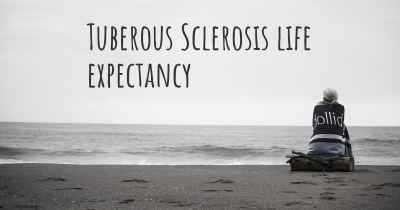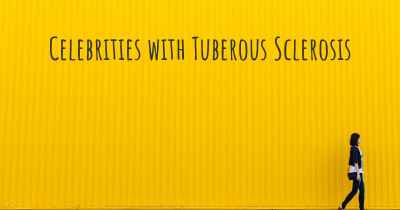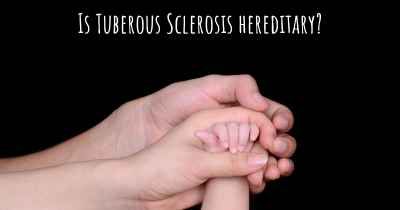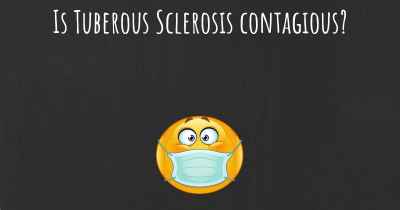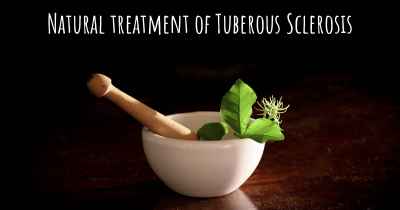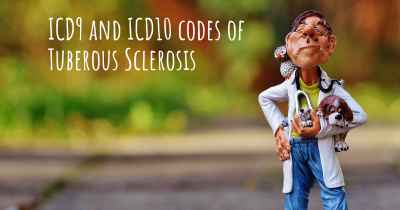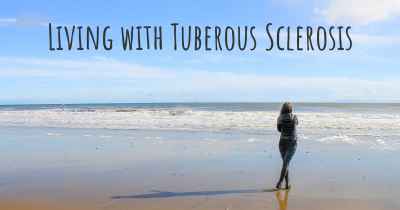What are the best treatments for Tuberous Sclerosis?
See the best treatments for Tuberous Sclerosis here
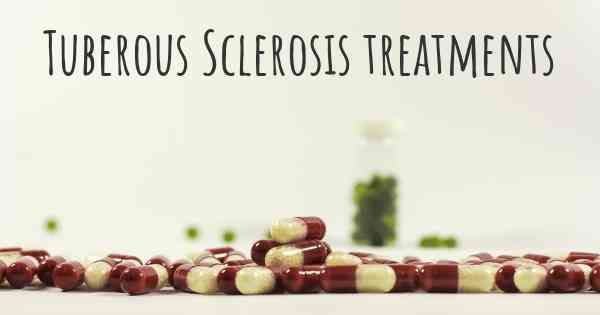
Treatment Options for Tuberous Sclerosis
Tuberous sclerosis, also known as tuberous sclerosis complex (TSC), is a rare genetic disorder that causes the growth of noncancerous tumors in various organs of the body. These tumors can affect the brain, heart, kidneys, lungs, skin, and other organs. The severity of symptoms and the organs affected can vary widely among individuals with TSC. While there is no cure for tuberous sclerosis, there are several treatment options available to manage the symptoms and improve the quality of life for those affected.
1. Medications
Medications play a crucial role in managing the symptoms associated with tuberous sclerosis. They can help control seizures, reduce the size of tumors, and alleviate other related symptoms. Antiepileptic drugs (AEDs) are commonly prescribed to control seizures, which are a common symptom of TSC. Medications such as vigabatrin, topiramate, and carbamazepine are often used to manage seizures effectively. Additionally, medications like everolimus and sirolimus can be prescribed to shrink tumors and reduce their impact on affected organs.
2. Surgery
Surgery may be recommended in cases where tumors cause significant complications or impair the normal functioning of vital organs. For instance, if a tumor in the brain causes seizures that are unresponsive to medication, surgical removal of the tumor may be considered. Similarly, surgeries can be performed to remove tumors in the kidneys, heart, or lungs that are causing severe symptoms or interfering with organ function. However, the decision to undergo surgery is made on a case-by-case basis, considering the risks and benefits for each individual.
3. Behavioral and Developmental Interventions
Children with tuberous sclerosis often experience developmental delays and behavioral challenges. Behavioral and developmental interventions can help address these issues and improve overall functioning. Early intervention programs, such as speech therapy, occupational therapy, and physical therapy, can assist in overcoming developmental delays and improving motor skills. Behavioral therapies, such as applied behavior analysis (ABA), can help manage behavioral challenges and improve social skills.
4. Genetic Counseling
Genetic counseling is an essential aspect of managing tuberous sclerosis. Since TSC is a genetic disorder, individuals with TSC and their families can benefit from genetic counseling services. Genetic counselors can provide information about the inheritance pattern of TSC, assess the risk of passing the condition to future children, and offer guidance on family planning options. They can also help individuals understand the genetic testing process and interpret the results.
5. Supportive Therapies
Supportive therapies can significantly improve the quality of life for individuals with tuberous sclerosis. These therapies aim to address specific symptoms and provide support for overall well-being. For example, individuals with TSC may benefit from occupational therapy to enhance daily living skills, speech therapy to improve communication abilities, and physical therapy to enhance mobility and coordination. Additionally, psychological counseling can help individuals and their families cope with the emotional and psychological challenges associated with TSC.
6. Regular Monitoring and Follow-up
Regular monitoring and follow-up with healthcare professionals are crucial for individuals with tuberous sclerosis. This allows for the timely detection of any changes or progression of symptoms, enabling appropriate interventions. Regular check-ups, imaging studies, and laboratory tests can help monitor the size and growth of tumors, assess organ function, and adjust treatment plans accordingly.
In conclusion, tuberous sclerosis is a complex condition that requires a multidisciplinary approach to treatment. Medications, surgery, behavioral and developmental interventions, genetic counseling, supportive therapies, and regular monitoring are all important components of managing the symptoms and improving the quality of life for individuals with TSC. It is essential for individuals with TSC to work closely with their healthcare team to develop a personalized treatment plan that addresses their specific needs and maximizes their overall well-being.
Posted Apr 2, 2019 by Marocas 870
Posted Jun 17, 2020 by Nick Fn Blum 2640
Recently, a class of drugs, mTOR inhibitors have shown efficacy on some lesions of the STB, arresting their growth or causing them to decrease (angiomyolipomas renal, astrocytoma giant cell, LAM lung, angiofibromes of the face), this is in some precise indications.
- Seizures can be difficult to treat (epilepsy called drug-resistant).
Many anti-epileptic drugs are available. They will be selected according to the type of epilepsy and the age of the person. Associations of several anti-epileptic drugs may be required. However, it is not always easy to find the right balance to control seizures and avoid adverse effects of treatment with anti-epileptic (drowsiness or worsening of behavioural problems).
Other therapeutic may be proposed in combination with antiepileptic treatment in difficult cases (ketogenic diet, vagus nerve stimulation), but the effect is inconstant and varies from one person to another. The surgical treatment of certain brain lesions localized at the origin of the seizures, is sometimes possible and should be investigated in all cases by a team of expert of surgery of the epilepsies with
drug resistance.
- The occurrence of astrocytoma with giant cells should be searched regularly by MRI or ct scan, during the whole of childhood and adolescence, even in the absence of clinical manifestations. These lesions may sometimes continue to grow in the adult and will have to be monitored even in this age group in some people. When these lesions grow and that the doctors think that they are at risk of
complication (see " What are the manifestations ?"), they can be operated on with good results. It sometimes happens that such intervention is necessary in emergency. If surgery is not possible or carries a risk, the medical treatment by an mTOR inhibitor is effective, but the effect is not immediate and it must be continued for many years.
- The angiofibromes facial can be removed by laser, or by abrasion of the facial skin (dermabrasion). They also decrease in patients treated with mTOR inhibitors. The UV favoring their appearance and their aggravation, it is therefore important to put a sunscreen, regardless of age.
- Fibroids unguéaux can be treated with laser, diathermy (treatment with electric current) or by surgery.
- Angiomyolipomas kidney stones can be treated by embolization selective, which is to clog the arteries that feed the tumor. This embolization is carried out on the occasion of an x-ray of the arteries (arteriography). It helps safeguard the rest of the kidneys. The risk of bleeding angiomyolipomas is difficult to assess, but even greater is that the tumor is larger, contains many vessels and that these vessels have aneurysms (small dilations focal). Embolization is the technique of choice to stop emergency bleeding.
The inhibitors of m-TOR may be an alternative for the treatment of angiomyolipomas. In the absence of the possibility of embolization, if there are angiomyolipomas may bleed, or cause a bad functioning of the kidneys, treatment by an mTOR inhibitor may be started. In some cases, before the lesions are unusual, it is necessary to remove a portion of the kidney by surgery (partial nephrectomy). The use of surgery, however, remains rare.
- Rhabdomyomas of heart decrease in size, usually with the time. If they result in a malfunction of the heart (heart failure), it may be necessary to treat with medication while waiting for the regression of the tumor.
- The pulmonary involvement should be sought routinely by a ct scan of chest in all adult women with TSC, and in any person with STB complaining of shortness of breath. A regular medical supervision and a measure of the respiratory function are recommended in cases of lymphangioleiomyomatosis or LAM (cysts of the lungs to the scanner). When the LAM causes a shortness of breath and that the extent of the
lung function (pulmonary function tests) is deteriorating, a treatment with mTOR inhibitors can slow or stop its aggravation. In rare cases, a graft (transplant) of the lungs is necessary.
- Finally, behavior disorders, and intellectual disabilities require a medico-educational early with the participation of psychiatrists, psychologists, neuropsychologists, rehabilitation technicians (physiotherapists, psychomotor therapists, speech therapists...) and educators.
- A contraceptive method adapted is to be determined by the gynecologist in each case (a way of life, overweight, age, cardiovascular risk factors, etc.). If the choice is made to an oral contraception, it is important to take into account that :
o estrogens (contrary to progestin) that are likely to foster the development of renal lesions and lung in women, therefore, are not recommended in case of STB
o Some aeds decrease the effect of the contraceptive pill. A consultation between the gynecologist and the neurologist may be necessary. In addition, some anti-epileptic drugs are harmful to the development of the fetus and contraindicated in case of pregnancy or when breastfeeding. Contraception
rigorous must, therefore, be considered in some cases : it will be discussed with the treating physician, the specialist, referral center, and the gynecologist regular.
Posted Apr 7, 2017 by Guillaume 1085
Posted Sep 19, 2017 by claudia 2020
Posted Oct 3, 2017 by PAOLA 2500
Posted Oct 11, 2017 by RolenMan 3120
